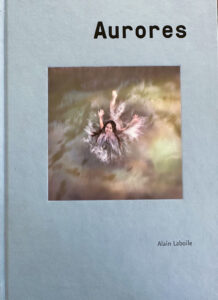

 Semaine 2 / 52 – Silent Stories de Kazuma Obara
Semaine 2 / 52 – Silent Stories de Kazuma Obara
Pendant la guerre du Pacifique, environ 330 000 citoyens ont été tués et 430 000 ont été blessés par les bombardements aériens des États-Unis au Japon. Un feu terrifiant s’étaient propagé, atteignant plus de 2 millions de foyers. Dans ce dommage inutile, un grand nombre d’enfants ont été tués et blessés. Un nouveau-né a été brûlé et a perdu sa jambe gauche. Un éclat d’une bombe blessa une jambe d’une toute petite fille de 6 ans. Tout le corps d’un jeune garçon a été brûlé tandis qu’une fillette de 10 ans devenait orpheline.
Le Japon s’est redressé lui-même de façon spectaculaire malgré les mort, les ruines et les ravages de la Seconde Guerre mondiale. Cette magnifique restauration est qualifié de « miracle économique japonais ». Cependant, contrastant avec cette reprise glorieuse, les enfants blessés ont dû lutter pour survivre avec leurs nouveaux handicaps. Ils ont grandi dans une société qui les a forcé à vivre dans le silence, à rester tranquille malgré le souvenir et l’empreinte des horreurs de leurs passés.
Ce livre donne la parole à ces enfants devenus adultes, en illustrants leurs histoires qui ont été maintenus silencieuses pendant 69 ans.
One day in July of 1945, the year Japan lost the war, I was suddenly knocked unconscious by a strong blow as the air raid sirens wailed across the sky. I don’t know how much time passed, but a loud cry from my brother brought me back to life. When I looked around, all I saw was a pool of blood. My left foot had been torn off at the knee and my brother was covered in blood. Since I was only six years old, I could not understand why my foot was suddenly gone. I thought it would grow out again, like a lizard’s tail. The second air raid turned my house and the whole town into a burnt-out ruin. We decided to evacuate. Our mother sold her clothes for a little money to feed us. My brother and I fought over what there was to eat –sweet potato roots, bran balls– but he died of malnutrition at the age of two. Without prompt treatment, my injured foot was devoured by maggots and gave off a terrible smell. The end of the war found us the evacuation home. I still remember when someone told me, frightened as I was of the roaring every day: “You won’t see another B-29 coming this way.” I will never forget how happy I was. My father returned from the war with malaria, a year after it ended, but he never recovered enough to support us and then he just disappeared, so I grew up fatherless, both during the war and after. I took part in school sporting meets and field trips from the sidelines. I would not go to school when it rained or when someone was picking on me, so I fell behind in my schoolwork. I had no chance to have fun with friends: I was always alone. “Why did I have to survive? Why should I have survived?” I started to ask myself such questions. I was able to make it through elementary school, but I quit before middle school ended. As a young woman, I stuck to dressmaking at home, to distract myself from the discrimination and prejudice directed at the war-wounded. I could not even walk if I did not use this prosthetic limb. The first thing I do when I wake up in the morning is to put it on; otherwise, I can’t even get to the bathroom. If I walk for a long time, the stump gets chafed and sore. I rub in an ointment and get some rest, so I can walk the next day, but recently I have not been able to wear the prosthetic limb if I don’t let the affected area breathe for at least a day. I would not be able to do anything if I did not have the prosthetic limb, so I just hope this left foot lasts as long as my life does. The pain is just all part of a day’s work. It will not stop until I die. I would never want anyone to experience pain like this.
Silent Histories :
Textes et photos de Kazuma Obara
Direction artistique / coordination éditoriale : Jan Rossell, Yumi Goto
257mmx182mm, 162 pages
Anglais / Japonais
Silent Histories été imprimée en Octobre 2015 par Offset Yapim Evi en Turquie. Cette édition est limitée à 1900 exemplaires.
Il a été publié à l’origine en 2014 dans une édition limitée de 45 exemplaires, signé par le photographe à Tokyo.
De nouvelles images ont été ajoutées à cette édition.

